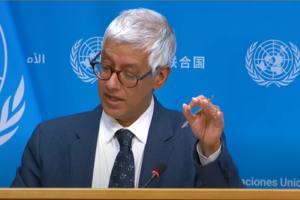2024 Voter Guide: Where the Presidential Candidates Stand on Economic Policies

Where do the 2024 presidential candidates stand on economic policy, and how do those stances compare? How might their policies look if they win?
Joe Biden (D)
Biden has touted paid leave as a key issue and promise of his campaign and presidency. Though he has advocated for a national paid-leave program, including an expansion of the Family and Medical Leave Act funded through tax increases in 2021, previous efforts have not led to its creation. Biden issued a memorandum that urged the heads of federal agencies to provide access to unpaid leave for federal employees when necessary, including in their first year of employment. Mentioning paid leave in his 2024 State of the Union address, he announced a plan to include a national paid family and medical leave program in his 2025 FY budget proposal. This plan would allow eligible employees up to 12 weeks of paid leave for such reasons and would also require employers to provide seven paid sick days each year to all workers.
Marianne Williamson (D)
She hopes to incorporate “paid vacation and sick leave for all employees, even part-timers who cannot work more than part-time hours due to disability or other limitations. Every industrialized nation but ours guarantees this right.” Further, she hopes to establish paid family leave and paid caregiving leave.
Donald Trump (R)
In his 2020 State of the Union, he became the first Republican president to advocate for paid family leave in an address; he did so in reference to a bill that allowed new parents to collect their child’s future tax credits early during leave. As part of the federal budget, he signed the Federal Employee Paid Leave Act, which created a nationwide paid family leave plan and allowed up to 12 weeks of paid parental leave to care for a new child.
Cornel West (Ind.)
He supports a “mandatory minimum of six months of fully paid parental leave ”
Robert F. Kennedy Jr. (Ind.)
While he has no stated stance on paid family leave, he wants to “expand free childcare to millions of families with programs like that pioneered by the state of New Mexico.”
Joe Biden (D)
In 2021, Biden issued an executive order mandating that all federal contractors and agencies must pay a $15 minimum wage to workers on federal contracts. This was an increase from the previous minimum wage for workers on federal contracts, which was at $10.95 per hour.
Marianne Williamson (D)
She advocates for an “increase of the federal minimum wage to $15/hr.” In “areas where this is too large a jump to make immediately,” she believes that the federal government should provide subsidies. She also supports a universal base income for adults with a new program that would “pay out a benefit equal to the individual poverty line, currently $1,255 per month in the contiguous United States, to every working-age adult with no exceptions.”
Donald Trump (R)
Trump’s stance on a $15 minimum wage is unclear. In 2019, he expressed he was “open” to such a federal minimum wage, but spoke out against House legislation that would raise it. He instead prefers that states decide the minimum wage for themselves, stating that “Alabama is different from New York, New York is different from Vermont, every state is different.” He has said that he would oppose an increase in the minimum wage if it would hurt small businesses: ““How are you helping your small businesses when you’re forcing wages?”
Cornel West (Ind.)
He hopes to “establish a federal Universal Basic Income commission” and enforce a “national $27 minimum wage with special considerations for specific geographies where $27/hour would not be a family-sustaining wage.” He further specifies that he wishes to ensure “family-sustaining and living wages for all disability benefits.”
RFK Jr. (Ind.)
He hopes to “raise the minimum wage to $15, which is the equivalent to its 1967 level.” To do so, he also wants to “prosecute union-busting corporations so that labor can organize and negotiate fair wages.”
Joe Biden (D)
The Biden administration announced $5.5 billion in grants for the construction of affordable houses, building upon the Housing Trust Fund, which provides grants to state governments for the same purpose. In 2022, the Biden administration released a Housing Supply Action Plan to close the housing supply shortfall. Further, in his budget proposal, he included a $37 billion expansion of the Low-Income Housing tax credit and the creation of a $19 billion Neighborhood Homes Tax Credit. The budget also included $7.5 billion in funding for a Project-Based Rental Assistance for those living off of extreme low-income conditions. He called on Congress to pass a mortgage relief credit for homebuyers and down payment assistance for first-generation homebuyers.
Marianne Williamson (D)
Her plan to make affordable housing includes launching a “domestic Marshall Plan to build ten million units of social housing in ten years” to “massively invest in a decommodified public option for housing.” This form of public housing will be “mixed-income and financially self-sustainable after an initial infusion of federal funds.” In regards to rent increase, she hopes to “establish a national cap on annual rent increases at no more than either 3% or 1.5 times the Consumer Price Index, whichever is higher. To not disincentivize housing production, new buildings would be exempt from this cap for 20 years.” Further, she hopes to end exclusionary zoning laws.
Donald Trump (R)
He signed an executive order to remove obstacles that may interfere with the development of new affordable housing, such as restrictive local zoning. He also created Opportunity Zones intended to attract investment in underfunded neighborhoods. However, under his administration in 2020, he slashed the budget for the Department of Housing and Urban Development by $9.6 billion when compared to fiscal year 2019. Trump garnered controversy after touting that his administration rescinded an Obama-era fair housing statute meant to combat housing discrimination in suburban neighborhoods: “You know the suburbs, people fight all of their lives to get into the suburbs and have a beautiful home. There will be no more low-income housing forced into the suburbs. … It’s been going on for years. I’ve seen conflict for years. It’s been hell for suburbia.” His administration justified the choice by stating it would alleviate burdens on local governments.
Cornel West (Ind.)
He wants to protect the “right to qualify for affordable housing by eliminating coverage gaps” and seek an “end to Wall Street mass real estate holdings and the marketization of human rights.”
RFK Jr. (Ind.)
He wants to “drop housing costs by $1000 per family and make home ownership affordable by backing 3% home mortgages with tax-free bonds.” He also promises to “incentivize local governments to bring city-owned land and buildings back onto the market.” He will encourage municipalities to change zoning laws, allowing for more ancillary dwelling units. Further, he hopes to “change business depreciation rules and reform the ‘enterprise zones’” in the tax code.
Joe Biden (D)
Biden announced a $7.3 trillion budget for the 2025 fiscal year, funded by raising taxes on corporations and high earners, to help cut the deficit. However, Congress is unlikely to pass the proposal as written. His stated goal is to reduce deficit spending by $3 trillion, which would slow but not stop the growth of the national debt. In Biden's time in office, roughly $2.5 trillion has been added to the national debt.
Marianne Williamson (D)
No stance found.
Donald Trump (R)
Over his time in office, the national debt rose $6.7 trillion. However, this deficit spending during the COVID-19 pandemic was needed to avert an economic crisis. Still, some economists argue that the deficit was exacerbated by Trump’s 2017 tax cuts, which resulted in a decrease in federal revenue. However, his tariffs brought in around $36 billion in additional revenue.
Cornel West (Ind.)
No stance found.
RFK Jr. (Ind.)
To fund his policies, he wants to “rein in military spending and use the resources to fund infrastructure, health care, higher education, child care, and domestic prosperity.” Specifically, he seeks an “end to the military adventures and regime-change wars, like the one in Ukraine.” His second policy will be “to end the corruption in Washington, the corporate giveaways, the boondoggles, the bailouts of the too-big-to-fail that leave the little guy at the mercy of the market… their contribution to tax revenues was 33% in the 1950s — it is 10% today. It’s high time they paid their fair share.”
This blog was written by Harry Ding, content intern (Center bias). It was reviewed and edited by Henry A. Brechter (Center bias), Malayna Bizier (Right bias), and Joseph Ratliff (Lean Left bias).


May 16th, 2024

May 16th, 2024

May 16th, 2024